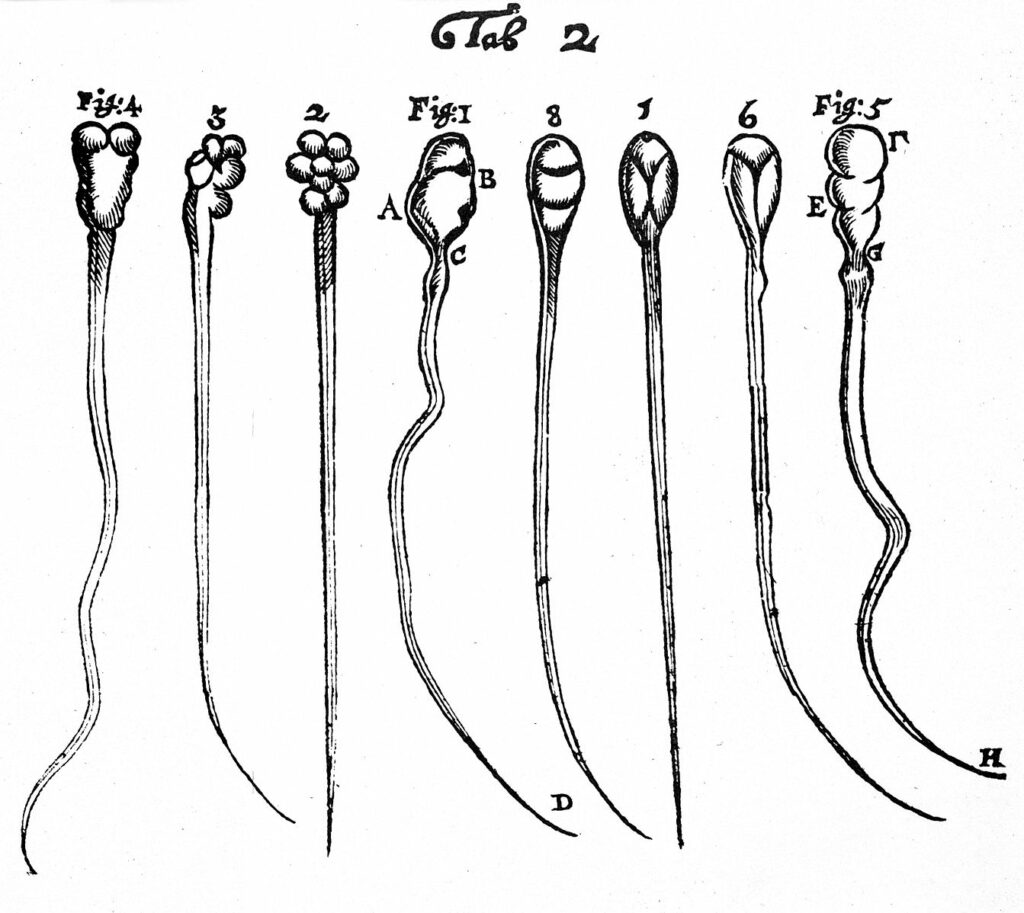SPERM FLAGELLUM BIOGENESIS
Understanding the function and molecular mechanisms of the sperm annulus.
The annulus is a Septin-ring structure located at the junction of the midpiece and the principal piece of mature sperm. It is initially formed in the round spermatids at the very early stages of flagellum assembly, concomitant with nucleus condensation and development of the acrosome. It has been suggested that the annulus acts as a morphological organizer, guiding flagellum assembly during spermiogenesis, and as a diffusion barrier, confining proteins to distinct compartments of the flagellum in mature sperm but the molecular mechanisms underlying such functions are still unknown. Our group initially demonstrated that the sperm specific anion channel SLC26A8 (TAT1) specifically locates to this structure and possibly anchors the Septin polymers to the plasma membrane, thus being required for proper flagellum structure. We also discovered the association of annulus defects in asthenozoospermia and provided an accurate frequency of these defects in human male infertility by analysis of large cohorts of asthenozoospermic individuals.
In line with these findings, our current work combines cell biology, biochemistry, proteomics and mouse genetics with the aim of deciphering the precise functions and molecular mechanisms of the annulus in sperm.

Associated members
Associated publications
Basic and clinical andrology 25, 10 (2015)
Background
The annulus is a ring-shaped structure located beneath the plasma membrane that connects the midpiece and the principal piece of mammalian sperm flagellum. It has been suggested that the annulus acts as a morphological organizer, guiding flagellum assembly during spermiogenesis, and as a diffusion barrier, confining proteins to distinct compartments of the flagellum in mature sperm. Previous studies on small cohorts of patients have attempted to correlate annulus defects with the occurrence of human asthenozoospermia. An absence of the annulus has been shown to be frequently associated with asthenozoospermia.
Findings
We tried to obtain a more precise estimate of the frequency of annulus defects, by screening a large cohort of 254 men presenting asthenozoospermia (mean progressive motility of 24 %) by the immunodetection of SLC26A8, a transmembrane protein that has been shown to be specifically localized to the annulus. By contrast to previous reports, our results indicate that annulus defects are associated with asthenozoospermia in only 1.2 % of cases.
Conclusions
We conclude that defects or an absence of the annulus are not frequently associated with asthenozoospermia. The use of annulus defects as a diagnostic endpoint in patients is therefore not appropriate.
Biological chemistry 392, 799—803 (2011)
The annulus is an electron-dense ring structure connecting the midpiece and the principal piece of the mammalian sperm flagellum. Proteins from the septin family have been shown to localize to the annulus. A septin complex is assembled early in spermiogenesis with the cochaperone DNAJB13 and, in mature sperm, associates with Testis Anion Transporter 1; SLC26A8 (Tat1), a transmembrane protein of the SLC26 family. Studies in mice have shown that the annulus acts as a barrier to protein diffusion and controls correct organization of the midpiece. Consistent with these findings, absence of the annulus is associated with flagellum differentiation defects and asthenozoospermia in humans.
Human molecular genetics 16, 1783—1793 (2007)
The Slc26 family is a conserved family of anion transporters. In the human, their physiological relevance was highlighted with the discovery of pathogenic mutations in several Slc26 transporters that lead to distinctive clinical disorders (Pendred syndrome, deafness, diastrophic dysplasia, congenital chloride diarrhoea) that are related to the specific distribution of these genes. We previously identified TAT1 as a new family member (Slc26A8), very specifically expressed in male germ cells in both the human and the mouse. To investigate Tat1 function in the male germline, we generated mice with a targeted disruption of the Tat1 gene. Heterozygous and homozygous Tat1 mutant mice were indistinguishable from wild-type littermates concerning survival rate, general appearance and gross behaviour; however, Tat1 null males were sterile due to complete lack of sperm motility and reduced sperm fertilization potential. Ultra-structural analysis revealed defects in flagellar differentiation leading to an abnormal annulus, disorganization of the midpiece-principal piece junction, hairpin bending of the sperm tail with disruption of the axial structures, and abnormal mitochondrial sheath assembly. While ATP levels were normal, ATP consumption was strongly reduced in Tat1 null spermatozoa. Interestingly, Tat1 is located at the annulus, a septin-based circular structure connecting the midpiece to the principal piece. Altogether, our results indicate that Tat1 is a critical component of the sperm annulus that is essential for proper sperm tail differentiation and motility.